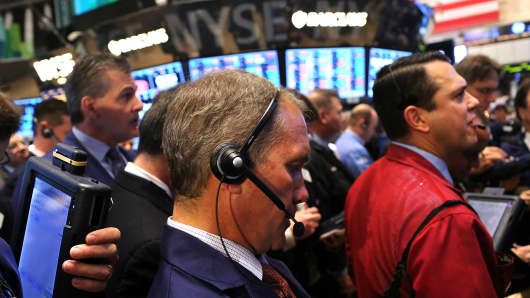The term moving average is frequently used in relation to the stock market. But what is it exactly and how important is it to investors? CNBC explains.
What is a moving average?
It's a technical analysis term referring to the average closing price of a security over a specified time. The most common time frames used are 20, 30, 50, 100 or 200 days.
Here's how it works. A 50-day moving average is calculated by adding up the closing prices of a stock over 50 days and then dividing the result by 50.
A 200-day moving average is calculated the same way—by adding up closing prices over 200 days—and dividing the result by 200. And the same formula is used for 20, 30 or 100 day averages.
What do moving averages tell investors?
Moving averages are used to spot pricing trends—up or down—for stocks. This is supposed to, in theory, help investors determine when to buy or sell a stock.Moving averages are the most commonly used piece of technical analysis for securities.
It's important to remember that moving averages only identify trends of a stock price. They will not determine absolute high prices or absolute low prices.
What technical traders do is use these averages, especially in a volatile market,when it's hard to determine any kind of market trends. The usual worry is missing the turn from a bull market to a bear market and getting caught up in the falling price of a stock or stocks.
So, if a stock price is moving below its average, say a 100-day average, that may be a time to sell for some investors, thinking they want to keep their losses to a minimum.
In general,the shorter the time frame used, the more volatile the prices will appear, so, for example, 20-day moving average lines tend to move up and down more than 200-day moving average lines.
A note of caution in using moving averages. They are one tool but not the tool, according to most experts, for stock picking. That's because the averages are often said to be misleading on stock prices—especially when the overall market is moving in a sideways direction or in a way that is neither up nor down.



